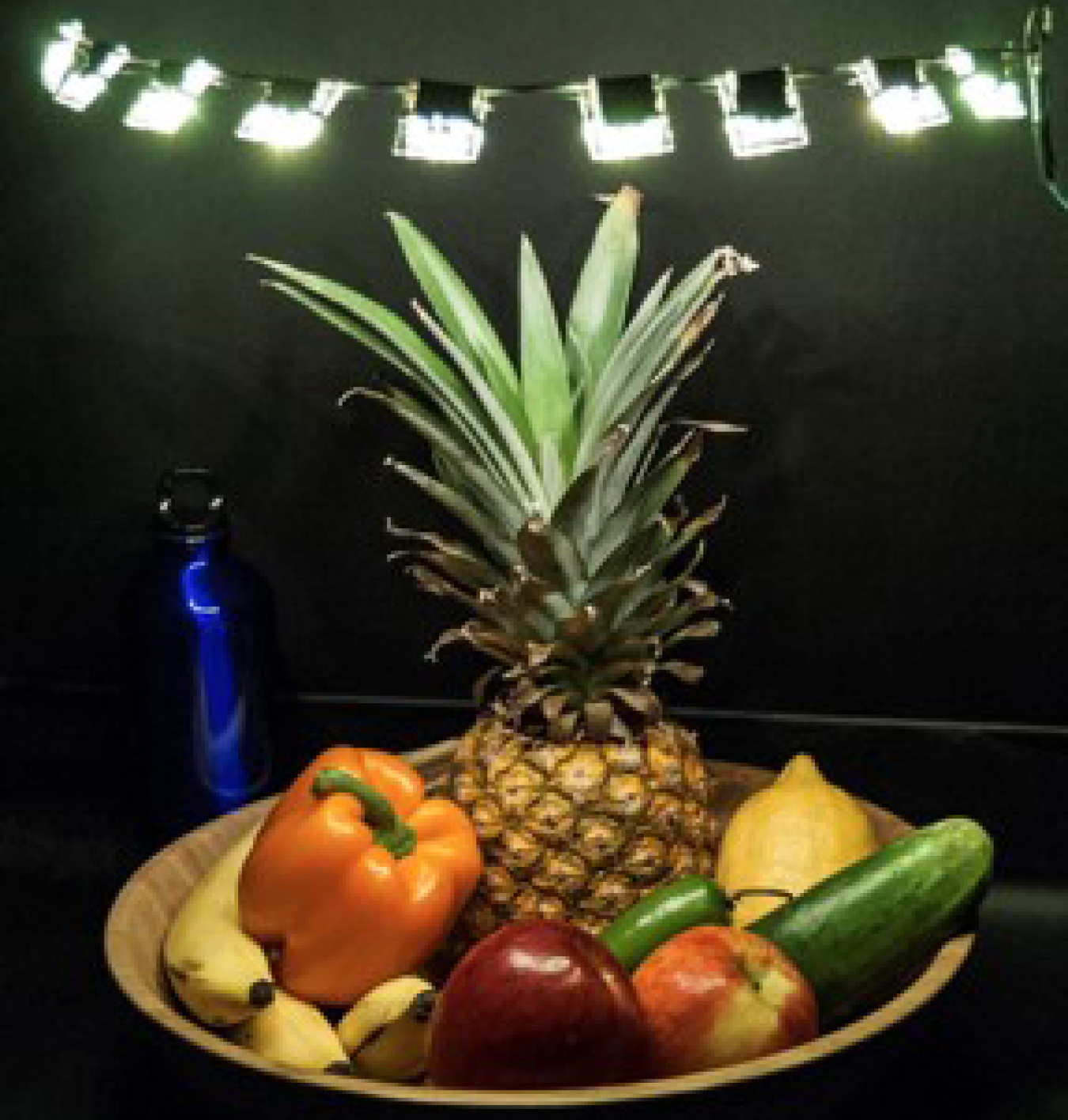
Good color rendering from OLED luminaires each comprising 36 pixels operated at 50,000-100,000 nits. (Photo credit: Caleb Coburn, University of Michigan)
The performance of white phosphorescent OLEDs (PHOLEDs) has long been constrained by the short lifetime of the blue OLED component. With the help of DOE funding, the University of Michigan – in partnership with the University of Southern California and Universal Display Corporation – is developing a radical new strategy to solve the problem of blue PHOLED lifetime. The new approach is expected to result in very high-efficiency lighting at all CCTs, while improving lifetimes to >50,000 hours from the present reported lifetimes of ~10,000 hours.
The team’s approach is multi-pronged, with three main thrusts: 1) exploring robust dopant and host molecular pairs for blue emission, and tailoring the device emission zone through graded doping to extend lifetime and enhance efficiency; 2) introducing excited state sinks (“managers”) co-doped with the host and phosphor in the emissive layer, which lower the chance of degradation by “sinking” highly energetic states so that molecular degradation is circumvented; and 3) implementing stacked red+blue or red+green+blue white PHOLEDs to decrease drive current, thereby extending lifetime, while maintaining high efficiency.
Early experiments established that graded doping of the emissive layer works to evenly distribute excitons for a more optimal lifetime. The researchers realized further improvements using a novel host grading method that integrates two hosts to improve charge distribution. This approach resulted in a 250% improvement in lifetime over single-host devices. Further, by adding excited state sinks, or managers, into the device, the team found it could more than double device lifetime.
Ultimately, the team combined the graded doping and excited state managers into stacked white PHOLED devices, realizing lifetimes of 80,000 hours (lumen maintenance to 70% of initial brightness) with efficacy of 45 lm/W, representing the longest-lived fully disclosed white OLED reported to date. (September 2018)
Return to Research Highlights.

